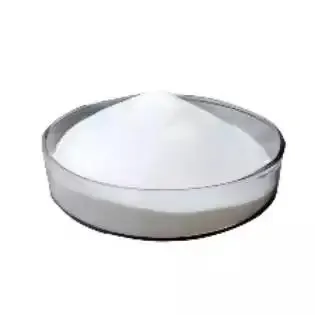Warning: Undefined array key "title" in /home/www/wwwroot/HTML/www.exportstart.com/wp-content/themes/1198/header.php on line 6
Warning: Undefined array key "file" in /home/www/wwwroot/HTML/www.exportstart.com/wp-content/themes/1198/header.php on line 7
Warning: Undefined array key "title" in /home/www/wwwroot/HTML/www.exportstart.com/wp-content/themes/1198/header.php on line 7
Warning: Undefined array key "title" in /home/www/wwwroot/HTML/www.exportstart.com/wp-content/themes/1198/header.php on line 7
- Afrikaans
- Albanian
- Amharic
- Arabic
- Armenian
- Azerbaijani
- Basque
- Belarusian
- Bengali
- Bosnian
- Bulgarian
- Catalan
- Cebuano
- China
- China (Taiwan)
- Corsican
- Croatian
- Czech
- Danish
- Dutch
- English
- Esperanto
- Estonian
- Finnish
- French
- Frisian
- Galician
- Georgian
- German
- Greek
- Gujarati
- Haitian Creole
- hausa
- hawaiian
- Hebrew
- Hindi
- Miao
- Hungarian
- Icelandic
- igbo
- Indonesian
- irish
- Italian
- Japanese
- Javanese
- Kannada
- kazakh
- Khmer
- Rwandese
- Korean
- Kurdish
- Kyrgyz
- Lao
- Latin
- Latvian
- Lithuanian
- Luxembourgish
- Macedonian
- Malgashi
- Malay
- Malayalam
- Maltese
- Maori
- Marathi
- Mongolian
- Myanmar
- Nepali
- Norwegian
- Norwegian
- Occitan
- Pashto
- Persian
- Polish
- Portuguese
- Punjabi
- Romanian
- Russian
- Samoan
- Scottish Gaelic
- Serbian
- Sesotho
- Shona
- Sindhi
- Sinhala
- Slovak
- Slovenian
- Somali
- Spanish
- Sundanese
- Swahili
- Swedish
- Tagalog
- Tajik
- Tamil
- Tatar
- Telugu
- Thai
- Turkish
- Turkmen
- Ukrainian
- Urdu
- Uighur
- Uzbek
- Vietnamese
- Welsh
- Bantu
- Yiddish
- Yoruba
- Zulu
Th7 . 31, 2024 06:09 Back to list
Exploring the Applications and Benefits of Polyethylene and Propylene Glycol in Various Industries
Understanding Polyethylene and Propylene Glycol Applications and Implications
Introduction
Polyethylene glycol (PEG) and propylene glycol (PG) are both synthetic compounds that play significant roles in various industries, including pharmaceuticals, cosmetics, food, and industrial applications. While they have distinct characteristics and uses, understanding their properties, benefits, and safety implications helps consumers and manufacturers alike make informed decisions about their applications.
Polyethylene Glycol (PEG)
Polyethylene glycol is a polyether compound that is characterized by its hydrophilic properties, which allow it to attract and hold water. PEG is produced through the polymerization of ethylene oxide and is available in a range of molecular weights, which dictate its physical properties and uses. Given its solubility in water and other organic solvents, PEG is commonly used as a solvent, thickening agent, and emulsifier in various formulations.
In the pharmaceutical industry, PEG is frequently employed to enhance the solubility of drugs, making it crucial for the development of oral and injectable medications. It is also utilized as a laxative in liquid formulations, capitalizing on its ability to retain water in the intestines and facilitate bowel movements. Furthermore, PEG is found in numerous cosmetic products due to its moisturizing properties, serving as a humectant that helps to keep skin hydrated.
Propylene Glycol (PG)
polyethylene and propylene glycol

In contrast, propylene glycol is a colorless, odorless liquid that is synthesized from petroleum products. It is recognized for its ability to absorb water and its relatively low toxicity, making it suitable for a wide variety of applications. Given its versatile nature, PG is commonly used in food and beverage products as a food additive, and its designation as Generally Recognized As Safe (GRAS) by the FDA provides confidence in its consumption.
Propylene glycol acts as a solvent for flavorings and colorings, helping to maintain the stability of food products. Additionally, it is often used in pharmaceutical formulations to solubilize drugs and improve their delivery. In the cosmetic industry, PG serves as a moisturizing agent and is known for its ability to stabilize formulations while providing a pleasant feel on the skin.
Comparative Analysis
While both PEG and PG have moisture-retaining properties and are used in various industries, their chemical structures and implications differ markedly. PEG is a polymer with varying molecular weights that contributes to its diverse range of uses, particularly in pharmaceuticals and cosmetics. On the other hand, PG is a smaller molecule, known for its efficient solubility and versatility in food and industrial applications.
Safety is a key concern for consumers and industries using these compounds. Both PEG and PG are generally recognized as safe when used appropriately; however, there are considerations for individuals with sensitivities or specific medical conditions. It is important to consult product labels and safety data sheets to understand any potential allergens or interactions.
Conclusion
Polyethylene glycol and propylene glycol are vital components in numerous products that enhance our daily lives. Their unique properties allow them to serve diverse roles across industries, from aiding drug formulations to improving cosmetic products. As science and technology continue to evolve, the applications of these compounds are likely to expand, leading to innovative solutions in health, beauty, and beyond. Ultimately, a comprehensive understanding of PEG and PG is essential for both consumers and manufacturers to make safe and effective choices in their respective fields.
Latest news
-
Certifications for Vegetarian and Xanthan Gum Vegetarian
NewsJun.17,2025
-
Sustainability Trends Reshaping the SLES N70 Market
NewsJun.17,2025
-
Propylene Glycol Use in Vaccines: Balancing Function and Perception
NewsJun.17,2025
-
Petroleum Jelly in Skincare: Balancing Benefits and Backlash
NewsJun.17,2025
-
Energy Price Volatility and Ripple Effect on Caprolactam Markets
NewsJun.17,2025
-
Spectroscopic Techniques for Adipic Acid Molecular Weight
NewsJun.17,2025

